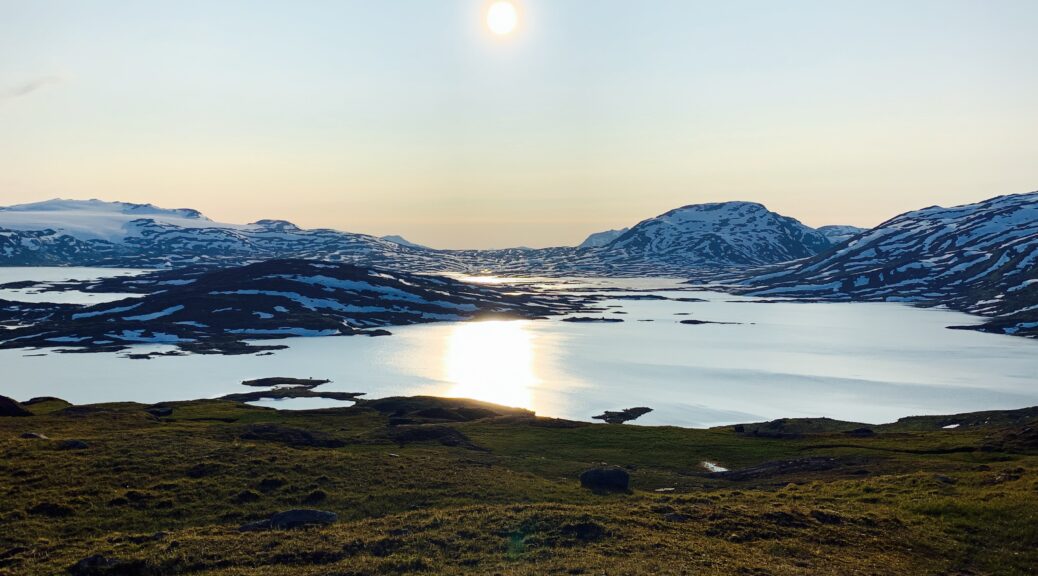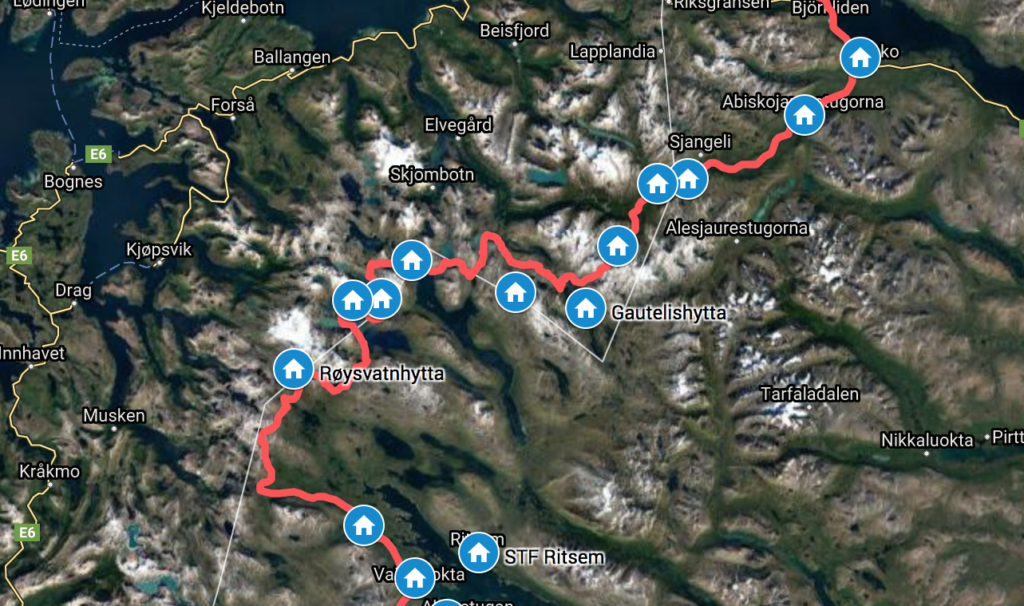Glazing sun, 30 °C, glittering snowfields and glaciers, mirror-like lakes in tough terrain with boulder-sized stones, scary bridges, very steep snow fields and plenty mosquitos. Add to that: Questionable route marking in a terrain constantly switching between Norway and Sweden. Quite frankly I was sweating like a pig and I was constantly almost out of food. But it was also the most spectacular area of the entire Norge på Langs.
Swedish bridges = Massive steel constructions. Norwegian bridges= Small, wooden, very shaky looking constructions, not always spanning the entire river. No Norwegian bridges look more shaky than the ones in this area, the worst being the on right before Cunojávri: While a woman I met right before the bridge was giving up on it, I eventually crawled over resulting in a rather large tear in my pants as well as a broken side zipper. I see now (november 2020) that the Narvik branch of DNT have fixed the bridge.
The terrain poses significant challenges influencing bridge construction: The weather is rough in winter with massive amounts of snow as well as strong winds. Consequently the spring flood may be enourmous. Furthermore, the remoteness of the area, makes any kind of maintenance challenging, especially in the area between Hellmobotn and Pauro. In this area, behind Tysfjord, Norge is only 12 km wide and at its smallest here.
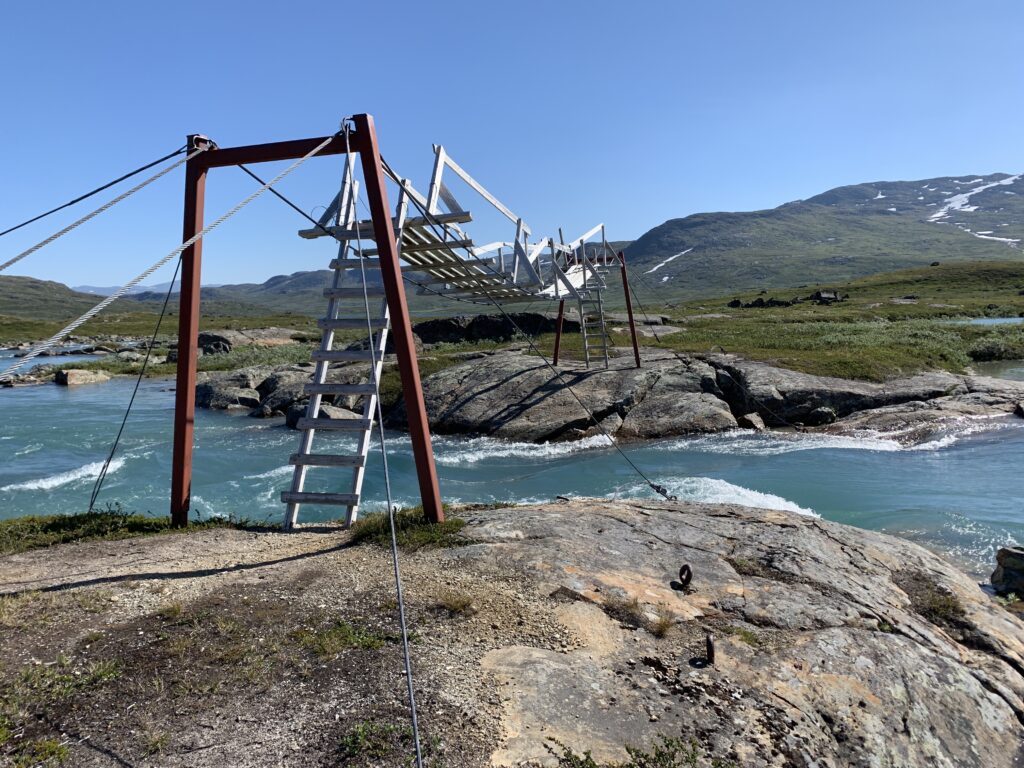
There were days, such as the one struggling through Cáihnavággi, where I managed less than 10 km in 10 hours. Crossing this bouldery pass was the toughest day since struggling with the rotten snow in Porsanger.
At one point, jumping endlessly from one boulder to another I was so exhausted, probably combined with the insufficient calorie intake, that my mind started drifting: This mountain wall looks menacing. If I jump 7 stones in a row I will be safe. And similar things. Time to take a break, get some sugar (if I have some) and think rationally: Superstition is a sign of fear. Think rationally and everything will be ok. Do I have a physical issue? No. Then there is no reason not to move on.
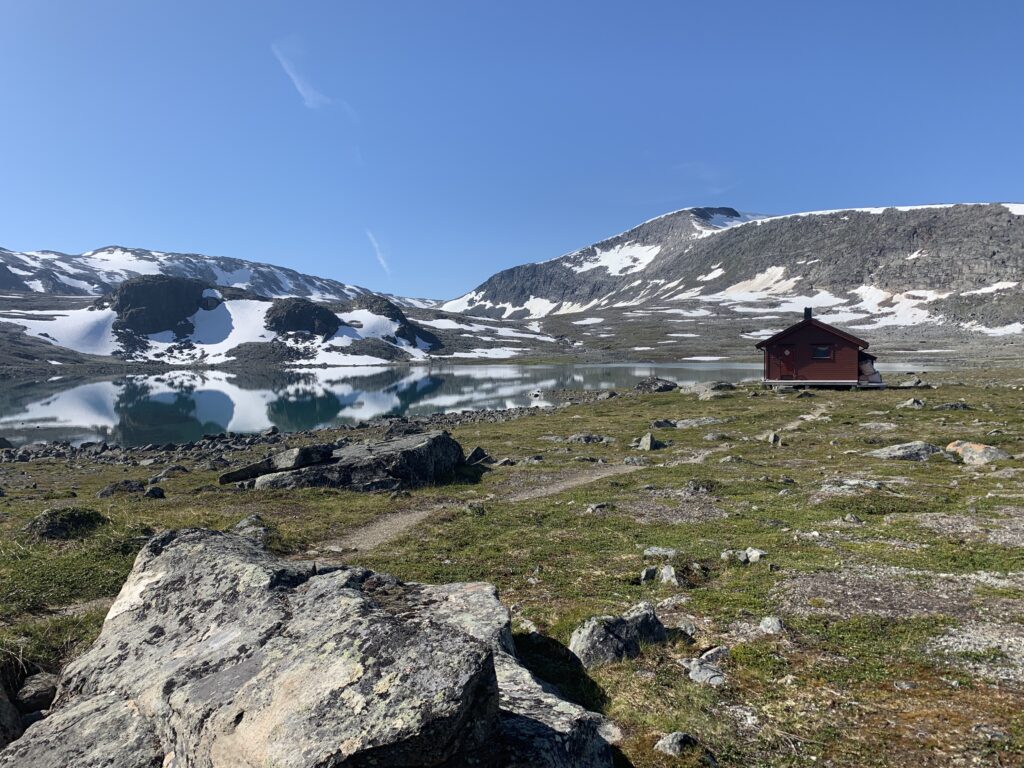
I was, in theory, on minimum food regimen, expecting to complete this section in 10 days, carrying food for 12, and in the end using 14 days to reach the boat from Vaisaluoka to resupply at Ritsem. Luckily I found two packets of biscuits at a construction site near Sitas. And, while fishing at Baugevatnet, a German hiker on his way out spontaneously offered me some of his surplus food. So, despite having underestimated the terrain, I was never entirely without food. On a positive note, Unna Allakas, the last Swedish hut before entering the Narvik mountains was stocked like a supermarked, but the food and beer I bought there was gone within 2 days. In the end, my food stores were down to exactly zero when I stumbled into Vaisaluokta to take the boat to resupply in Ritsem.
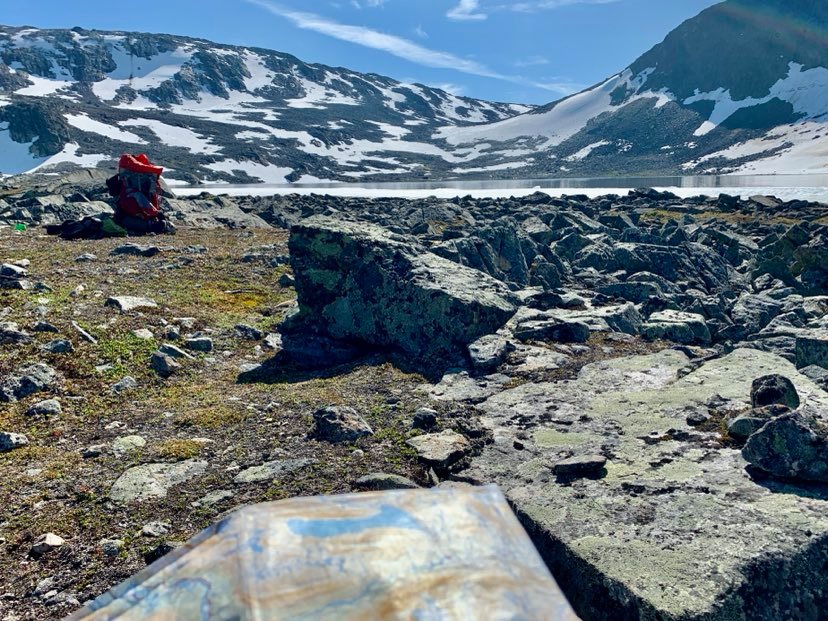
The moment the Pauro valley became visible over the mountain pass in the midnight sun was perhaps the single most beautiful moment of Norge på Langs and the featured image on top of this post. And if I am ever asked to name my favourite DNT cabin, such as they routinely do in the DNT podcast Utestemmer, my answer would be the Pauro cabin, right next to the perfectly still Båvrojávvre and right before infamous rowing section, the only one of the entire trip. To row over this 50 m stretch. there are two rowing boats. Ideally there will be one boat on each side and you then obviously have to row three times to again leave one boat on each site. A rowing guide for dummies illustrating this is even plastered on the wall in the Pauro cabin.
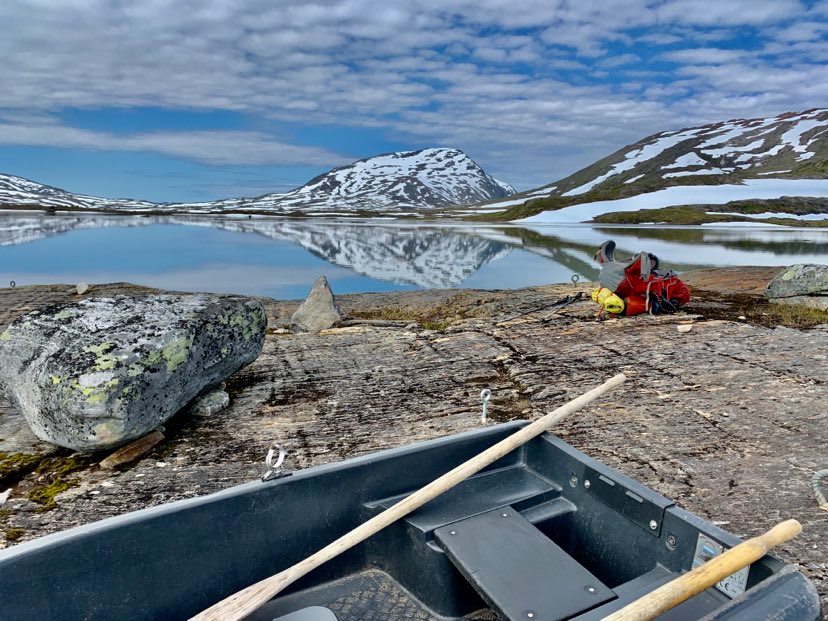
When I looked through the visitors book at Pauro cabin, I read about a couple arriving here last summer, with both boats on the other side. The weather then became quite bad and they were forced to turn back from the detour around Båvrojávvre, had to then spend a day in the cabin, risking to miss their boat out, two days further ahead in Hellmobotn. Then, luckily a hiker came from the south and they could cross. Curiously, the hiker, whose videos I watched before starting the trip, and who openly admitted she only rowed once, leaving no boat on the Pauro side, was here just the day before this couple wrote in the visitors book. There are alternatives to rowing, and really no excuse to leave no boat behind: Take the 8 km detour around the lake, for once. Or simply walk through the water: A 190 cm tall guy had managed to walk over carrying his backpack on his head earlier in the summer. Otherwise The sleeping pad method would work here: Inflate your sleeping pad, place your backpack on it, hold on to it and simply swim over. A friendly Sami couple, who owned some of the reindeer in the area seemed to have moved into one of the two DNT cabins, and told us they had helped someone with the rowing a couple of days earlier. While not particularly difficult, I was nevertheless quite happy a German couple with a dog happened to be crossing at the same time.
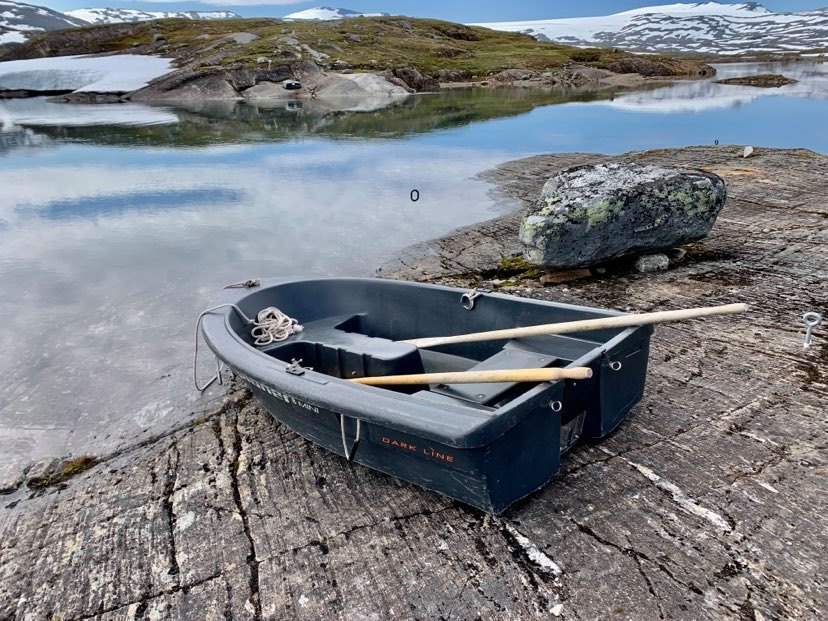
Two weeks later, a new bridge was built here. Price: 800.000 NOK. It will be interesting how it goes, as several bridges have been built here before, all broken down, presumably due to particular geologic conditions as well as massive amounts of snow and strong side winds.
It is mainly due to these bridges I decided to become a member of the Narvik branch of DNT. As foreigner you are automatically assigned to DNT Oslo, but DNT will change it upon request. I figured that my membership fee would be more needed in Narvik with ~ 900 members than in Oslo, with ~ 40.000 members and significantly fewer logistic as well as meteorological challenges.
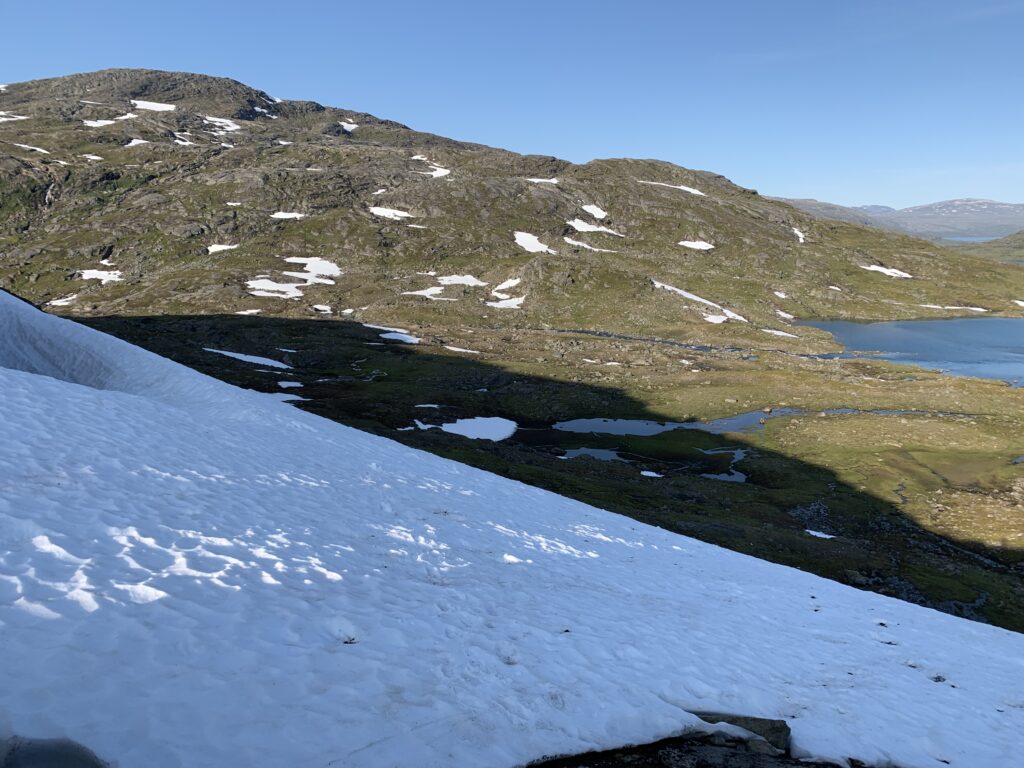
The trail switches constantly between Norway and Sweden. Several local people have told me, that some Sami routinely remove the trail markers in areas they don´t want people to pass through as they feel the hikers disturb the reindeer. Whether true or not, obviously I do not know, but the fact is that the part of Nordkalottleden behind Tysfjord is not well marked, especially the Swedish sections.
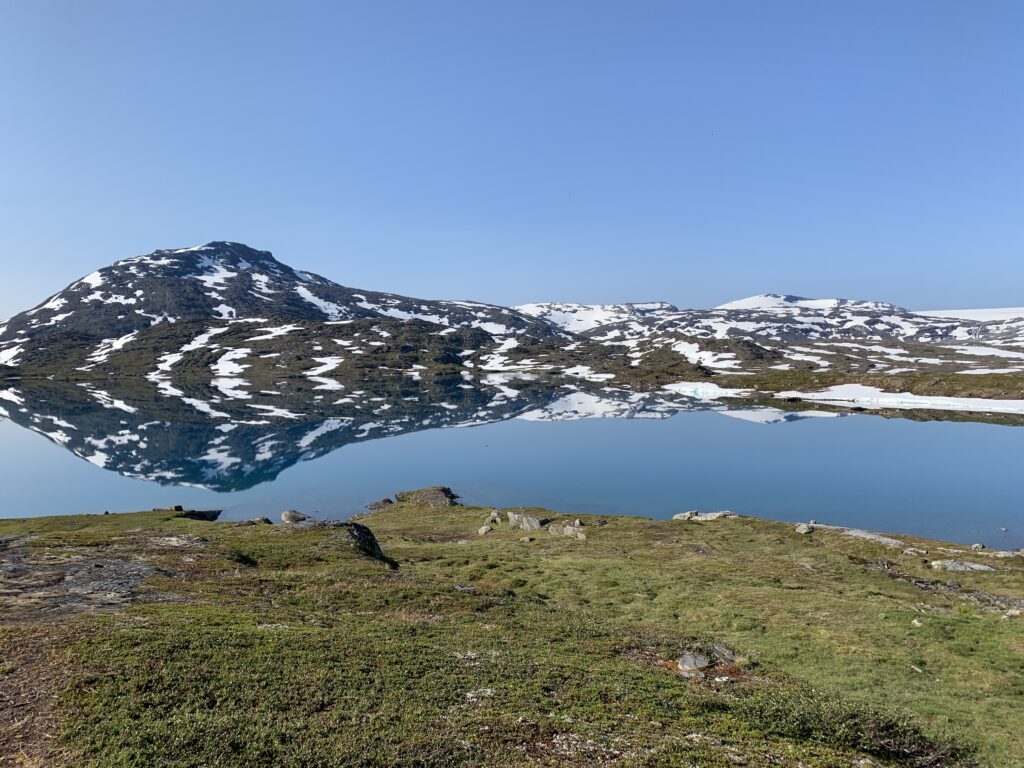
For two weeks I had heard trail gossip about the river crossing just south of Røysvatn: Impassable, take the detour via Ritsem, several said. Well, the detour and especially the following motor boat over Akkájavre would be a violation of one of the core principles of my hike: To walk 100% of the way, so that was not an option, except in an emergency. I studied ut.no meticulously for possible detours to the west trying to estimate the size of the rivers in the area. But difficult to know where it is possible to get through, the terrain is tough, full of crevices and small vertical drops, to small to be seen on the map, but far too big to pass. Since taking the detour to Ritsem would equal giving up on the entire trip, I had no choice but to give it a try.
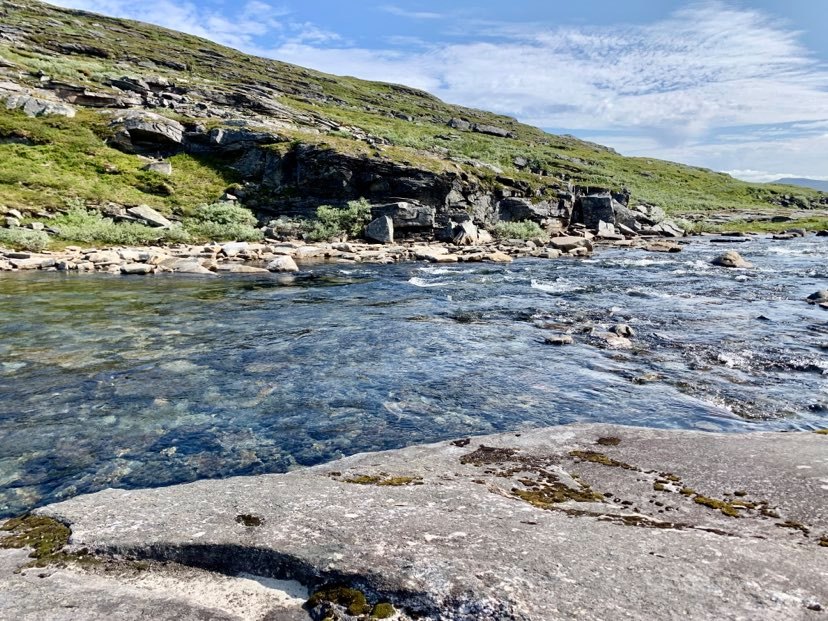
Distracted by this river issue, I even took a wrong turn down the pass right before Røysvatn, thereby missing the cabin as I, for some strange reason, didn´t trust my GPS, and thus accidentally ended up camping quite near this river: The plan was to attempt the crossing in the morning, where the water levels in this period of +25°C with lots of snow melting would be significantly lower than in the afternoon. So, after worrying for more than a week about this river, and building up to this crossing for days, in fact…it was quite uncomplicated. A couple of meters with water reaching the middle of the thigh, but the rest not above knee level.
Again: A lesson already learned, but once again reinforced: Never listen to trail gossip from strangers: You do not know their level of experience nor their mindset, and furthermore people in general seem to overestimate the challenges they just overcame themselves. In addition weather, and especially river conditions may change rapidly, within hours. This crossing by the way is in Sweden, and considering the number of hikers who report problems here, a bridge should be considered. 100 m upstream from the crossing place, there even is a perfect place, where the river is no more than 10 meters wide.
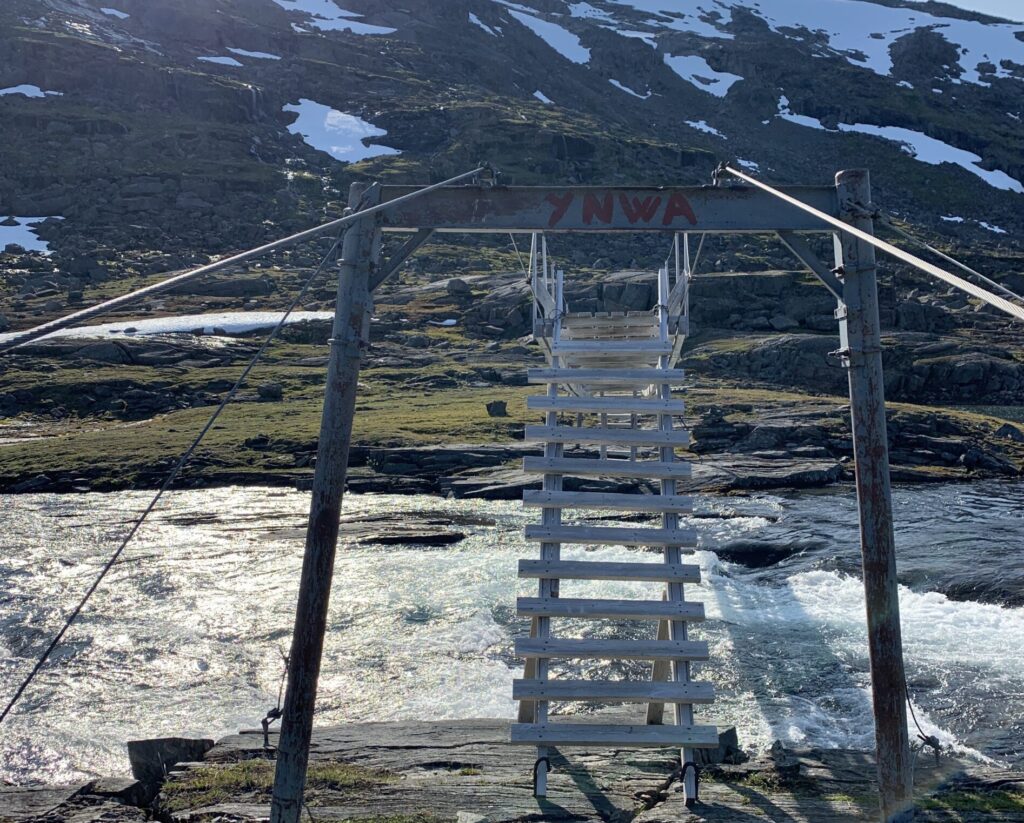
Future dream trips #4: With packraft in the area Sørfjorden-Pauro-Røysvatn-Hellmobotn. Entry via Hellmobotn or perhaps Ritsem

